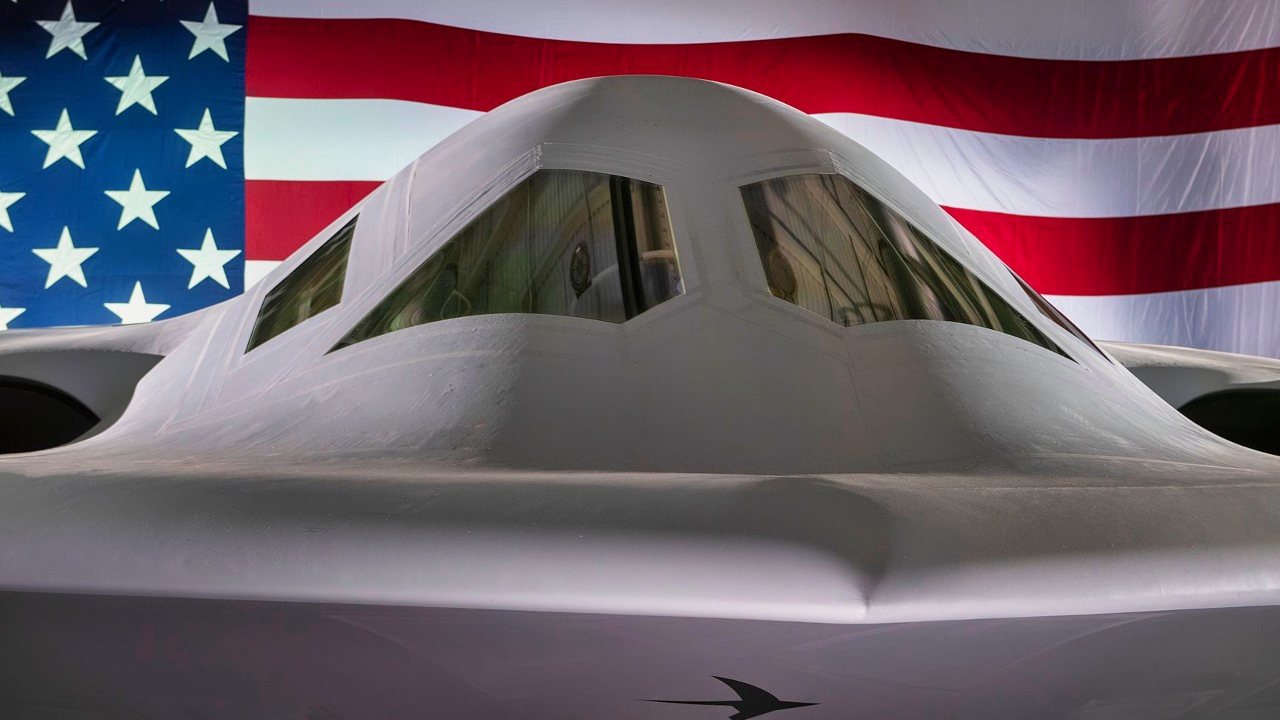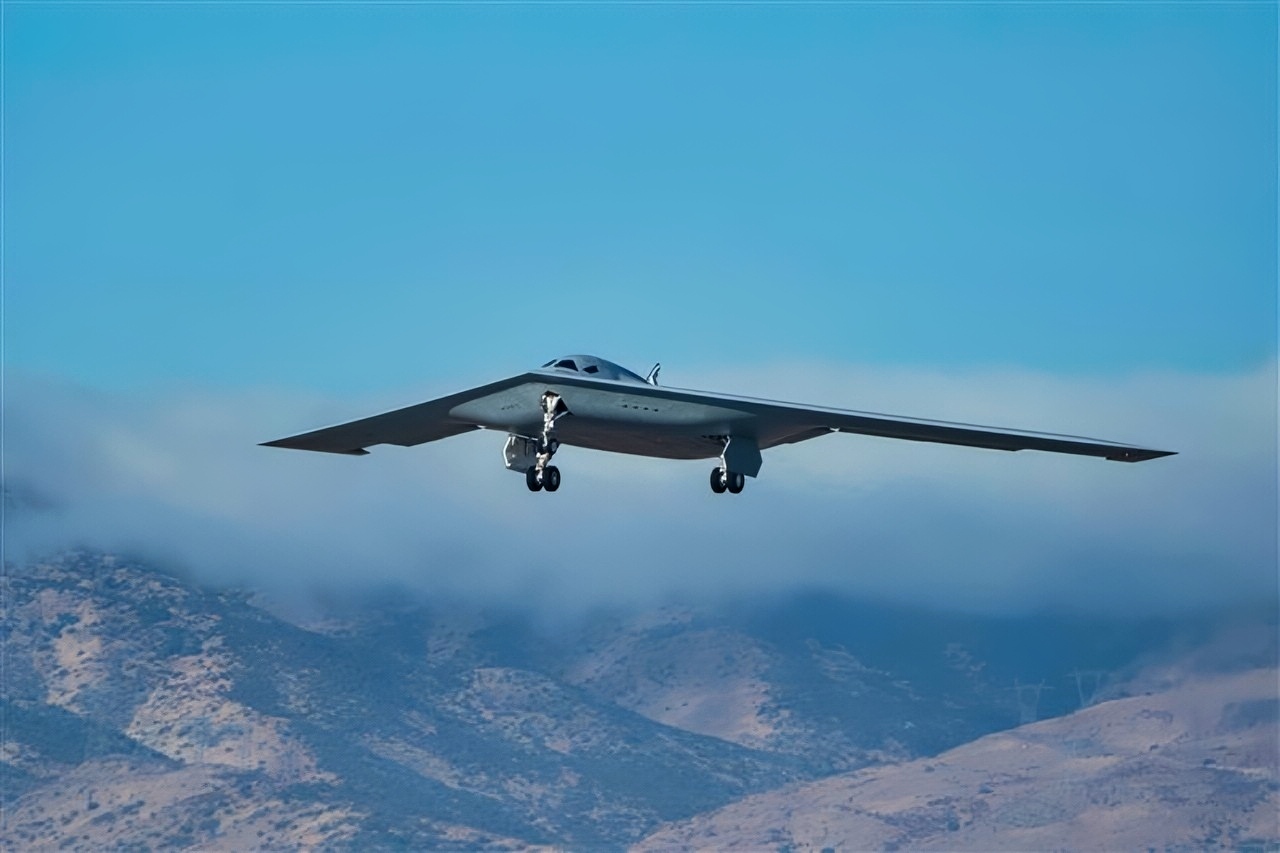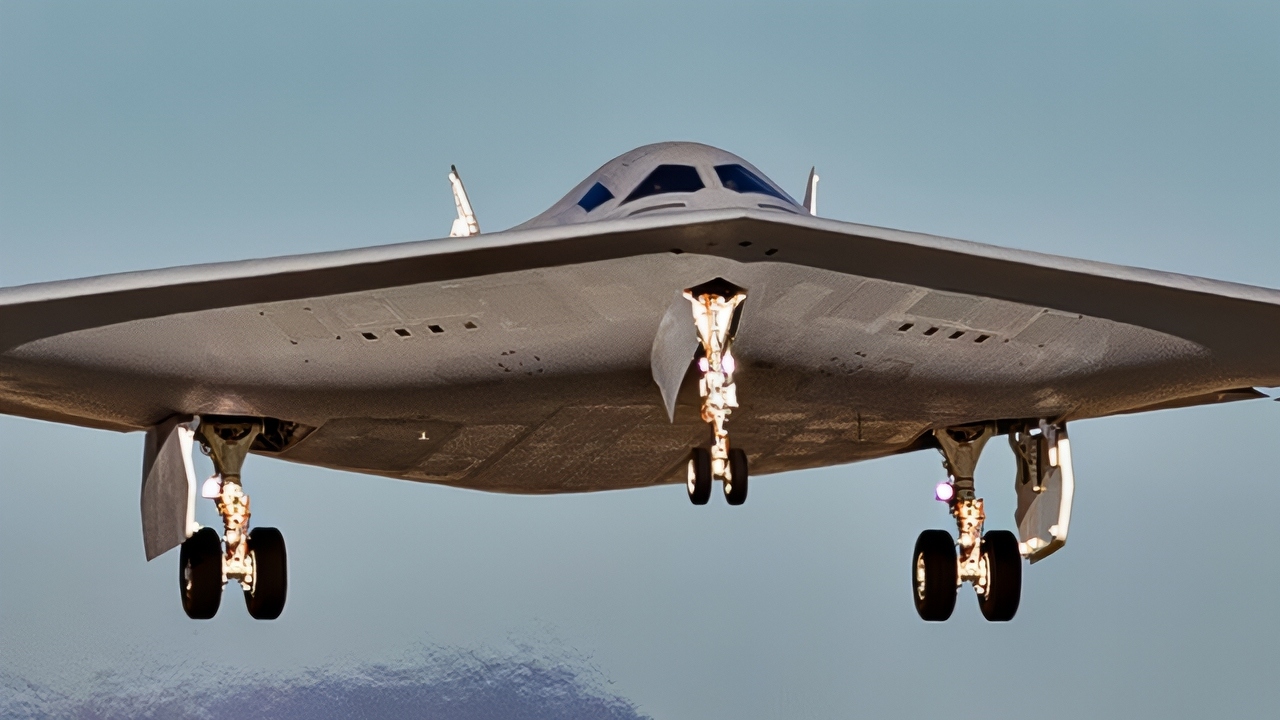Key Points and Summary – Plans to accelerate production of the B-21 Raider stealth bomber have been put on hold due to the ongoing U.S. government shutdown, Northrop Grumman’s CEO confirmed.
-Discussions with the Air Force about increasing manufacturing capacity, aimed at getting the sixth-generation aircraft fielded faster, have been halted but are expected to resume once the shutdown ends.

The B-21 Raider was unveiled to the public at a ceremony December 2, 2022 in..Palmdale, Calif. Designed to operate in tomorrow’s high-end threat environment, the B-21 will play a critical role in ensuring America’s enduring airpower capability. (U.S. Air Force photo)

The B-21 Raider was unveiled to the public at a ceremony December 2, 2022 in
Palmdale, Calif. Designed to operate in tomorrow’s high-end threat environment, the B-21 will play a critical role in ensuring America’s enduring airpower capability. (U.S. Air Force photo)
-Despite the pause in acceleration talks, the B-21 program itself continues to progress, with two test aircraft now flying and multiple others undergoing ground tests, even as debate continues over whether the planned fleet of 100 bombers is sufficient.
Talks to Speed Up B-21 Raider Production Halted by Government Shutdown
Back in July, Air & Space Forces magazine reported that production of the new B-21 Raider, the world’s first sixth-generation bomber, was speeding up.
The Air Force said at the time that the $10.3 billion that Congress was seeking to spend on the B-21 program in fiscal 2026 would not only fund “continuing development and fabrication, but increased production capacity.”
“The Air Force is committed to the successful fielding of the B-21 and is investing in the infrastructure necessary to support an increased yearly production capacity,” the Air Force said in a statement at the time to the magazine.
“This proactive measure ensures the long-term health and efficiency of the production line, enabling us to deliver this critical capability to the warfighter,” the Air Force also said. “Details regarding specific production rates remain classified.”
The report added that previous budgets stated that the 100 B-21 Raiders ordered would take until the mid-to-late 2030s to finish production. Northrop Grumman had indicated this spring that there had been a “change in the manufacturing process” for the project, to enable “a speed-up in production.”
However, the continuing government shutdown is affecting that production process, a report this week says.
Government Shut Down
The standoff in Washington over budget levels has now kept the government shut down for more than three weeks, making it one of the longest such shutdowns in history.
Per Meritalk, a specific defense spending bill failed to pass the U.S. Senate last Thursday, falling short of the needed 60 votes. The bill would have funded the Pentagon for fiscal year 2026, along with a military pay raise and “key modernization efforts across all service branches.”

U.S. Air Force Airmen with the 912th Aircraft Maintenance Squadron prepare to recover the second B-21 Raider to arrive for test and evaluation at Edwards AFB, Calif., Sept. 11, 2025. The arrival of a second test aircraft provides maintainers valuable hands-on experience with tools, data and processes that will support future operational squadrons. (U.S Air Force photo by Kyle Brasier)
The bill also included “$29 billion in shipbuilding funds, investments in Air Force and Army modernization, and $500 million to advance satellite communications capabilities.” Three Democrats joined every Republican in voting for the bill.
Investopedia, however, recently argued that the government shutdown is a great time to buy defense stocks, including Northrop Grumman and Lockheed Martin. The shutdown has caused such stocks to lag, but government shutdowns never last forever.
“We’d be buyers of tepid Defense outlooks as upward revisions should materialize as the funding picture clears up,” Morgan Stanley recently wrote in an analyst note, as cited by Investopedia.
The Effect on the B-21
Per a Defense One story published on Tuesday, which cited Northrop Grumman’s quarterly earnings call this week, the government shutdown has resulted in a “halt” of discussions about accelerating the B-21 program.
“We are in the midst of those discussions. They’ve been held up a bit because of the government shutdown and the availability of resources to continue those discussions during this time,” CEO Kathy Warden said on the earnings call. “We expect those to resume.”
The CEO added that the company expects to have clarity in the coming months about how to move forward. She also said that the company expects more procurement awards later this year.
“With the progress we’ve made, we remain on track to receive the LRIP lot three and lot five advanced procurement awards later this year,” Warden said on the call, as reported by Defense One. “We continue discussions with the Air Force on the framework for an agreement to accelerate the B-21 production rate.”

A second B-21 Raider, the nation’s sixth-generation stealth bomber, joins flight testing at Edwards Air Force Base, Calif., Sept. 11. The program is a cornerstone of the Department of the Air Force’s nuclear modernization strategy, designed to deliver both conventional and nuclear payloads. (Courtesy photo)
Northrop’s website describes the B-21 Raider as “the future of U.S. air power.”
“We are providing America’s warfighters with an advanced aircraft offering a combination of range, payload, and survivability,” the company said. “The B-21 Raider will be capable of penetrating the toughest defenses to deliver precision strikes anywhere in the world. The B-21 is the future of deterrence and the world’s first sixth-generation aircraft to reach the skies.”
The B-21’s Status
The first-ever B-21 Raider took flight took place in late 2023. Then, last month, a second B-21 jet was spotted in the air, with the flight later confirmed by the Air Force.
“With the arrival of the second B-21 Raider, our flight test campaign gains substantial momentum,” Air Force Secretary Troy Meink said in a September statement.
Per an Air & Space Forces story about the earnings call, Northrop also shared some progress details about the B-21 Raider project. The company says that “multiple” B-21 bombers are “undergoing ground tests and being prepared to join the two aircraft now in test flight.”
Warden, the CEO, also clarified that it’s a “separate discussion” between pursuing an expansion of production capacity and the idea of increasing the number of jets that will be bought.
Should the Government Buy More?
While the Pentagon has committed to buying 100 B-21 Raiders, more than one defense expert has argued that the order should be much larger.
Back in June, the Heritage Foundation’s Shawn Barnes and Robert Peters wrote an op-ed advocating for a doubling of the Defense Department’s production of the jets, as well as the establishment of a second facility for building them.
“History has shown the perils of settling for the affordable rather than the necessary,” the authors argue. “The U.S. cannot afford to make the same mistake with the B-21 Raider.”
The plan to buy 100 of the bombers, an order that won’t be complete until the late 2030s, is inadequate, the two authors argue.
“The nation needs a second production facility for the B-21, regardless of the final number of aircraft to be procured. The Defense Department should set a production rate of 20 aircraft per year,” Barnes and Peters write. “This demand signal will allow Northrop Grumman to build a second production plant. Although the cost of building a second facility is likely to approach $800 million, the return on investment is extraordinarily high.”
The important thing for the future, the Heritage authors write, is to deter China.
“Increasingly, it is understood that deterrence cannot be achieved without credible, survivable, and sufficient long-range conventional strike capability. The B-21 provides this foundational capability. America simply cannot wait until the late 2030s to field sufficient capacity for this vital deterrence role.”
About the Author: Stephen Silver
Stephen Silver is an award-winning journalist, essayist, and film critic, and contributor to the Philadelphia Inquirer, the Jewish Telegraphic Agency, Broad Street Review, and Splice Today. The co-founder of the Philadelphia Film Critics Circle, Stephen lives in suburban Philadelphia with his wife and two sons. For over a decade, Stephen has authored thousands of articles that focus on politics, national security, technology, and the economy. Follow him on X (formerly Twitter) at @StephenSilver, and subscribe to his Substack newsletter.
More Military
Montana-Class: The U.S. Navy’s Superbattleships That Never Sailed
The F-35 Stealth Fighter Feels Like a Black Hole of Trouble
Russia’s Admiral Nakhimov Kirov-Class Battlecruiser Has a Warning for the Russian Navy
China’s Yuan-Class AIP Stealth Submarine Has A Warning for the U.S. Navy
Mach 6 SR-72 Darkstar Could Soon Be the ‘Fastest Plane on Earth’










